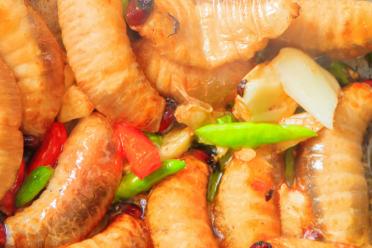Fighting back for orangutans with BiteBack
BiteBack, led by Mush’ab Nursantio, have a solution to challenge palm oil and save Indonesia’s rainforests. Making cooking oil from mealworms.
Rainforest destruction is rampant throughout the world, but nowhere is it quite so apparent than in Indonesia, where Orangutans are being pushed to the brink of extinction in the wild - their habitat destroyed through the ceaseless encroachment of palm oil plantations. Palm oil is everywhere - in your Nutella, in your soap. Yet, it doesn’t have to be this way.
There are environmentally friendly alternatives - just ask Mush’ab Nursantio, who along with company BiteBack is challenging and uprooting the status quo to provide an ecologically sensible option.
Insects.
Some say we should eat them, many already do (about 2 billion or so, in fact). Others are squeamish, but usually wouldn’t say no to insect based foods if they didn’t have to look at an insect in the first place. As a food supplement, insect based protein powders are already popular amongst fitness enthusiasts, while in Canada you can pick up a jar of cricket bolognese from a supermarket shelf.
So, insect oil - how and why?
I was studying Agriculture Technology at university when I began growing insects in my house. It was just a hobby at the beginning, being involved in a student environmental organization has led me to look into the interesting trend in sustainable food sources.
I decided to apply for the Thought for Food Challenge in 2015, so I gathered a team, started to look into and see what the properties of insects are, and we did a small bit of research, investigating the problems. We found out that it works to substitute palm oil with insect oil.
What we are working on is Darkling Beetle larvae (Zophobas morio), which reproduce so rapidly that they can outdo palm oil yield by up to 40 times within the same area of land (and can be harvested within 3 months and an adult beetle lays 500 eggs/14 days, compared to palm trees which require 5 years for the first harvest).
Importantly, insects can also be scaled vertically, and fed by using biomass from agro-industry waste streams such as wheat and rice husk or spent grain. The fatty acid properties posses an advantageous combination: rich in unsaturated fats and healthy fats including omega-3, -6, and -9.
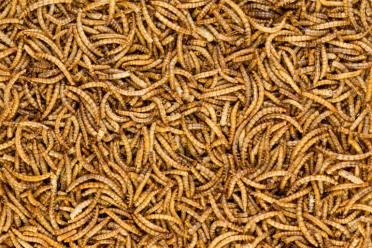
Indonesia is home of some of the most biodiverse rainforests in the world and we’ve cleared 74 million hectares of it in the last half century, an area twice the size of Germany, according to Greenpeace.
One of the main reasons is to make room for palm oil plantations. Palm oil is the most widely used vegetable oil in the planet and can be found in almost half of all packaged items in supermarkets as well as being the main source for biodiesel.
Being the largest producer of this commodity, it’s unlikely we will stop the practice anytime soon - especially the growing demand due to increasing global population. So, we need to look into more sustainable alternatives before we lose more forests, their capacity to soak up carbon dioxide, and the species that live there such as orangutans.
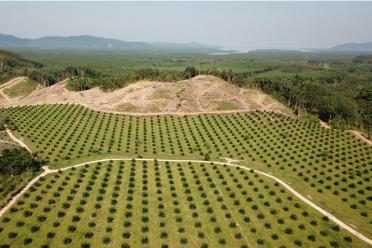
It’s actually pretty simple. You can yield the oil by crushing dried insect paste, but at Biteback we are developing a refining technology to process these oils and fats into functional ingredients like cooking oil, butter, and fatty alcohol for personal care products.
It varies for each species but the one we work with has a greasier texture, a nutty and earthy smell, and a darker color.
But for fully refined products it’s no different to your regular canola cooking oil or margarine, especially once it’s incorporated in your processed foods.
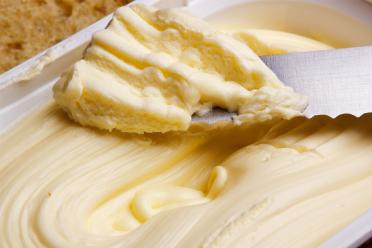
Palm oil is actually still the most sustainable vegetable oil in the market at the moment compared to other popular product like canola, sunflower seed, soy, you name it. Palm oil has a better yield per hectare per year, requires less fertilizer, pesticide, and energy input. So it’s not our main mission to replace this commodity completely, especially as there are millions of people whose lives are dependent on it.
Although having better yield and fewer inputs to produce, insect oil could not compete with the scale of palm oil. What we see is insect oil being scaled big enough to bring an alternative to the market so industry and consumers can diversify their consumption. By doing that we can stop the need to clear more land and put less pressure on our environment.

Palm oil is everywhere - in your Nutella, in your soap. Yet, it doesn’t have to be this way.

Dr Peter Bickerton, Scientific Communications & Outreach Manager, Earlham Institute
The biggest challenge for us is to scale the production - since it’s a fledgling industry it’s still hard to source the raw material and it’s still expensive. Although there are already household-scale farms in Indonesia, they are very reluctant to produce more since the market is still limited to only pet food.
We are currently doing research to optimize the farming practice and hopefully as we continue to grow there will be more people growing insects to supply our operation. The other challenge that we thought of is the market acceptance of our product.
Surprisingly, after having some discussions with our industry customers, they actually are familiar with insect-based products like natural red dye for food made of cochineal and see our alternative in a similar light.
Fun fact, insect-based red dye is usually labelled as “natural red no.3” and palm oil has 150 different names on the label, just so you know…
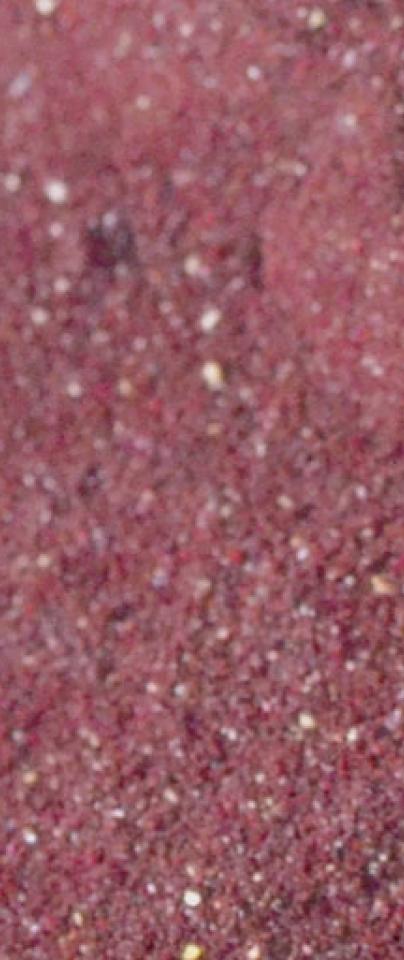

Surprisingly, after having some discussions with our industry customers, they actually are familiar with insect-based products like natural red dye for food made of cochineal and see our alternative in a similar light.

Hopefully within 5 years we will start to see more insect oil in our kitchens or incorporated in a lot of our daily products like packaged foods and personal care products. The same goes for insect-based food in general.
I’m really excited with this whole movement of entomophagy in Europe and the US because in the region where it’s already been a practice, people have been starting to move away from it because of the stigma around it.

Hopefully within 5 years we will start to see more insect oil in our kitchens or incorporated in a lot of our daily products like packaged foods and personal care products.

Mush’ab Nursantio, Founder & CEO, BiteBack Insect
Raw and grilled sago grubs. They have a sweet-nutty flavor and are really fatty and tender - they just melt in your mouth.
